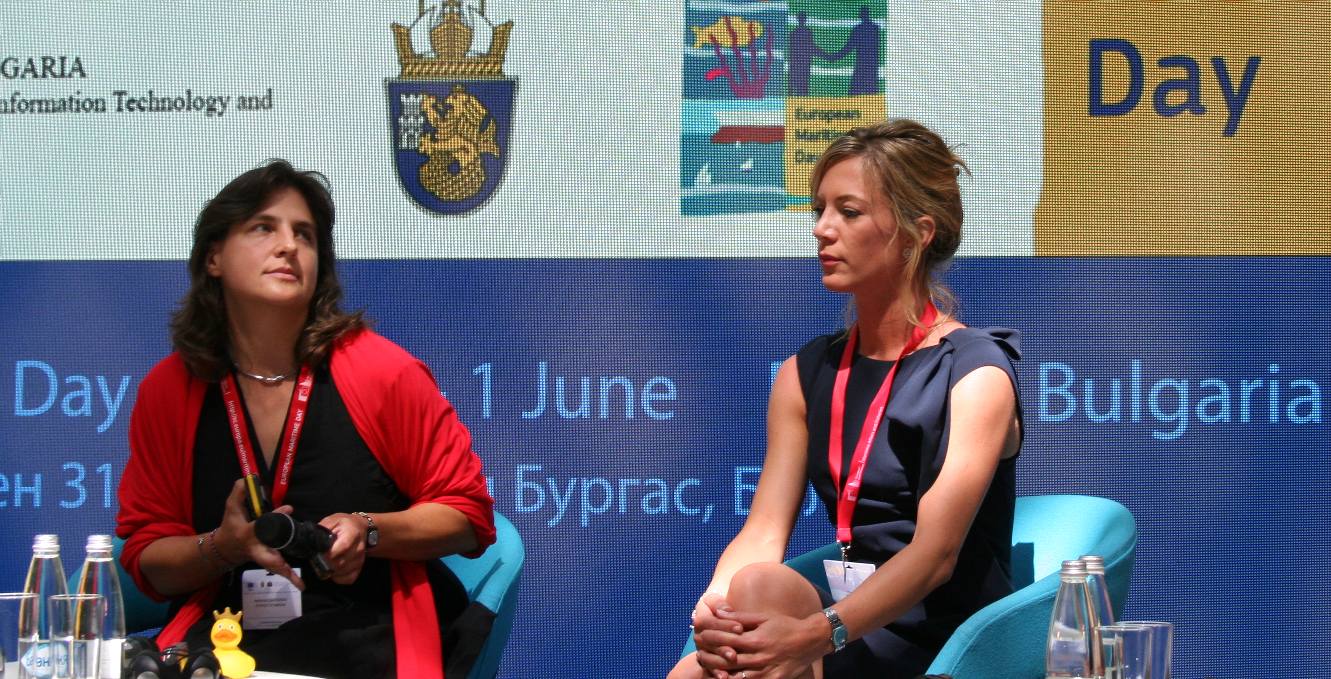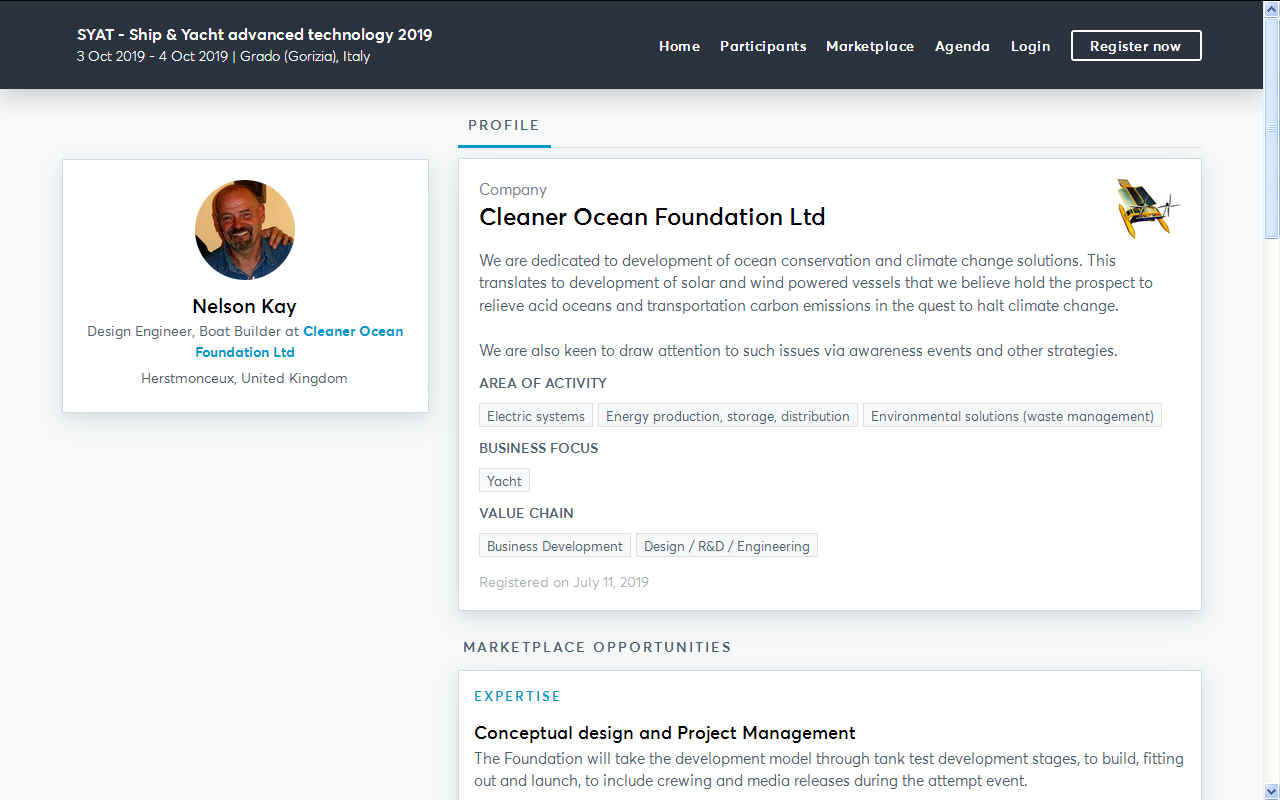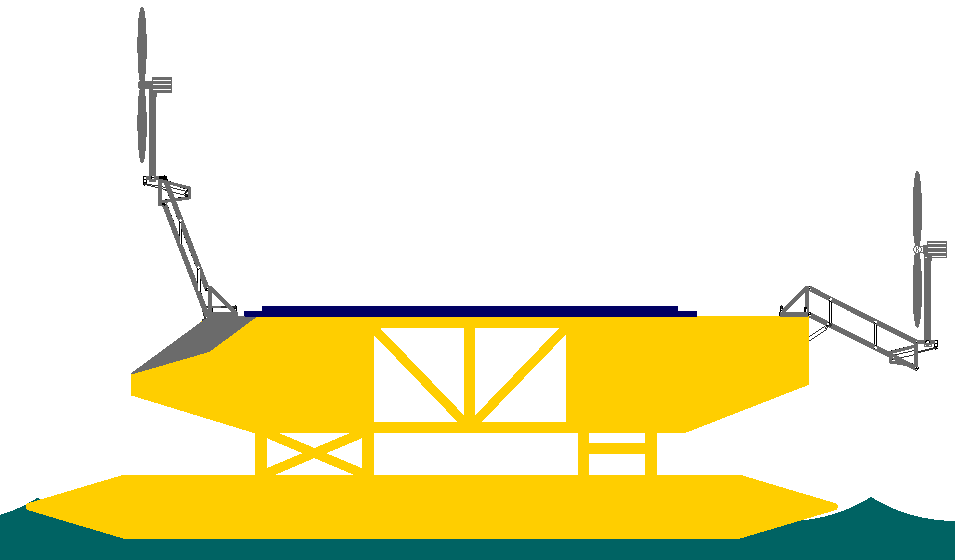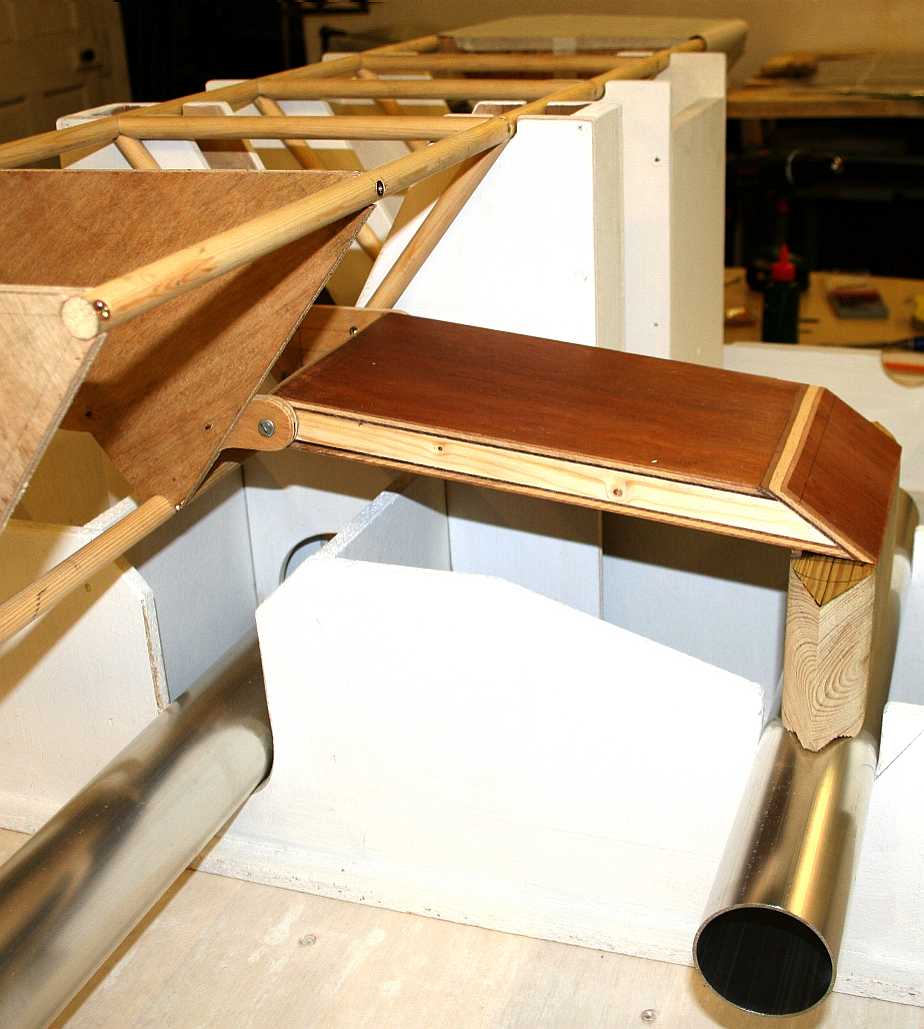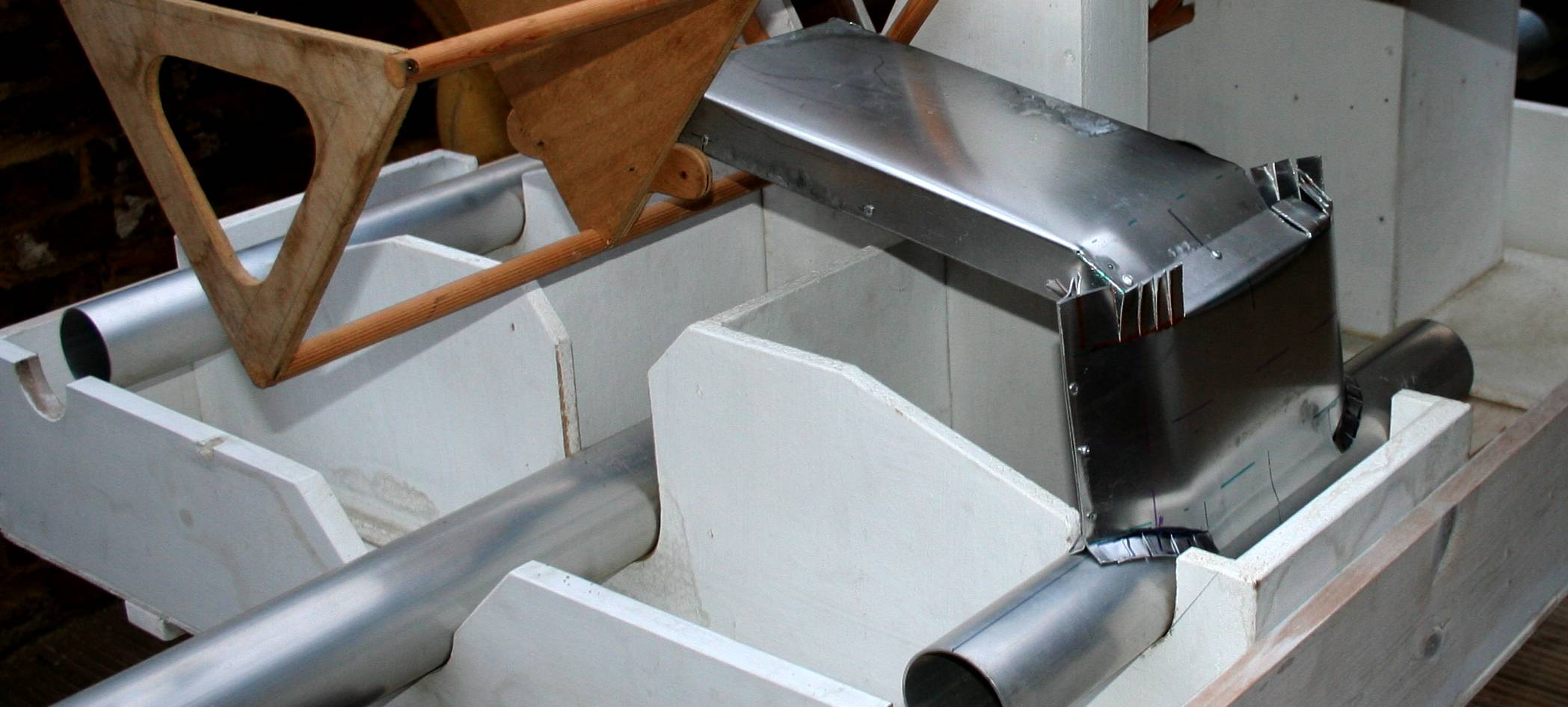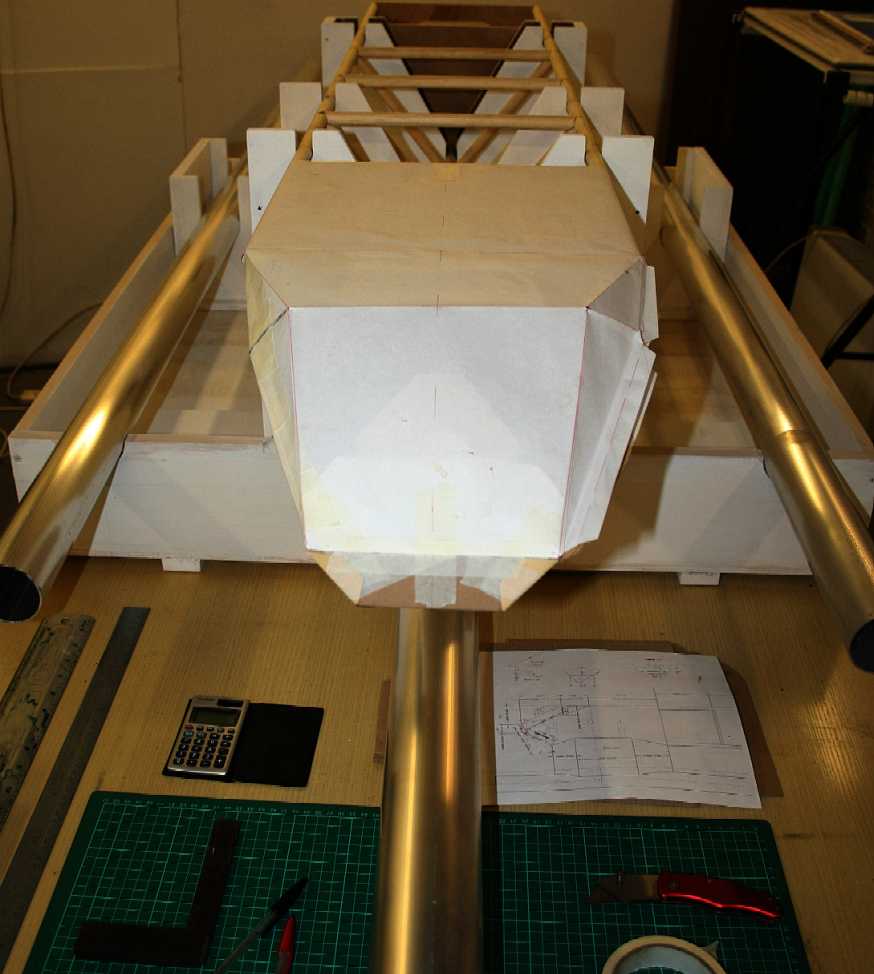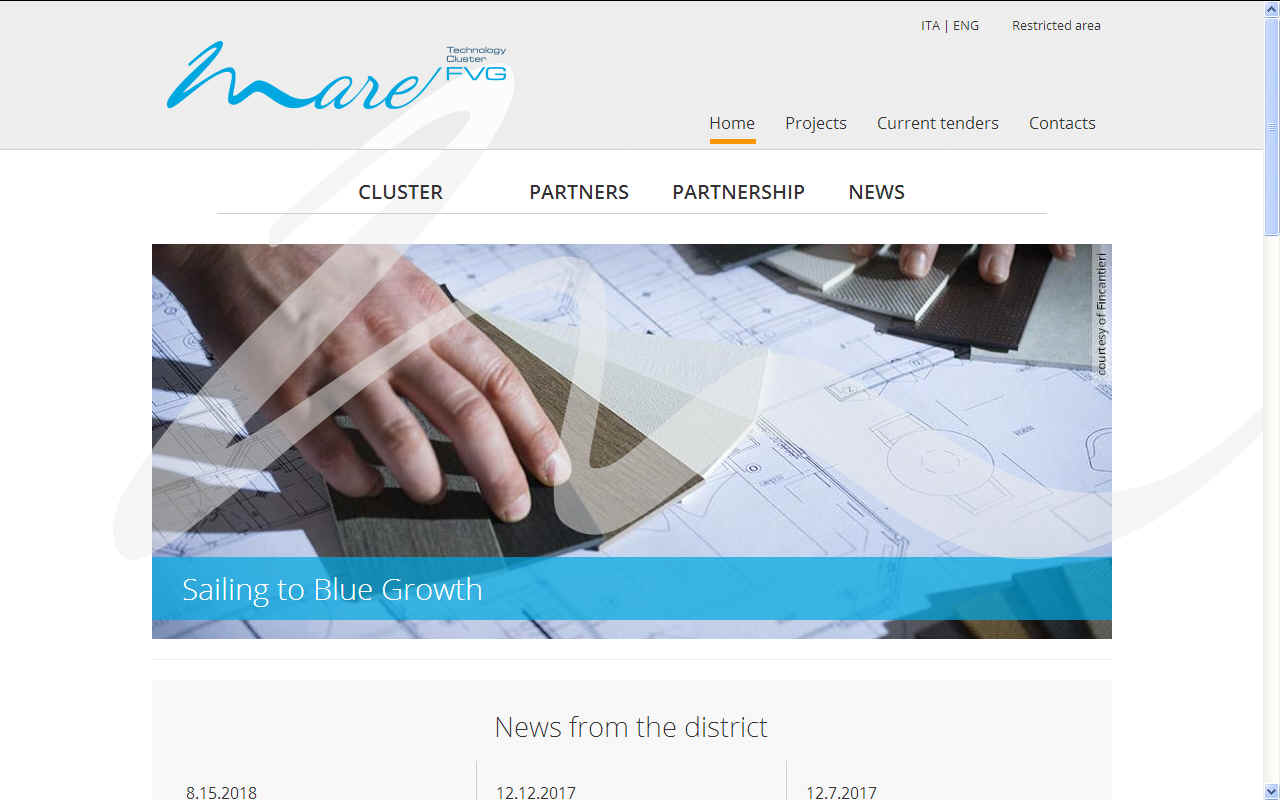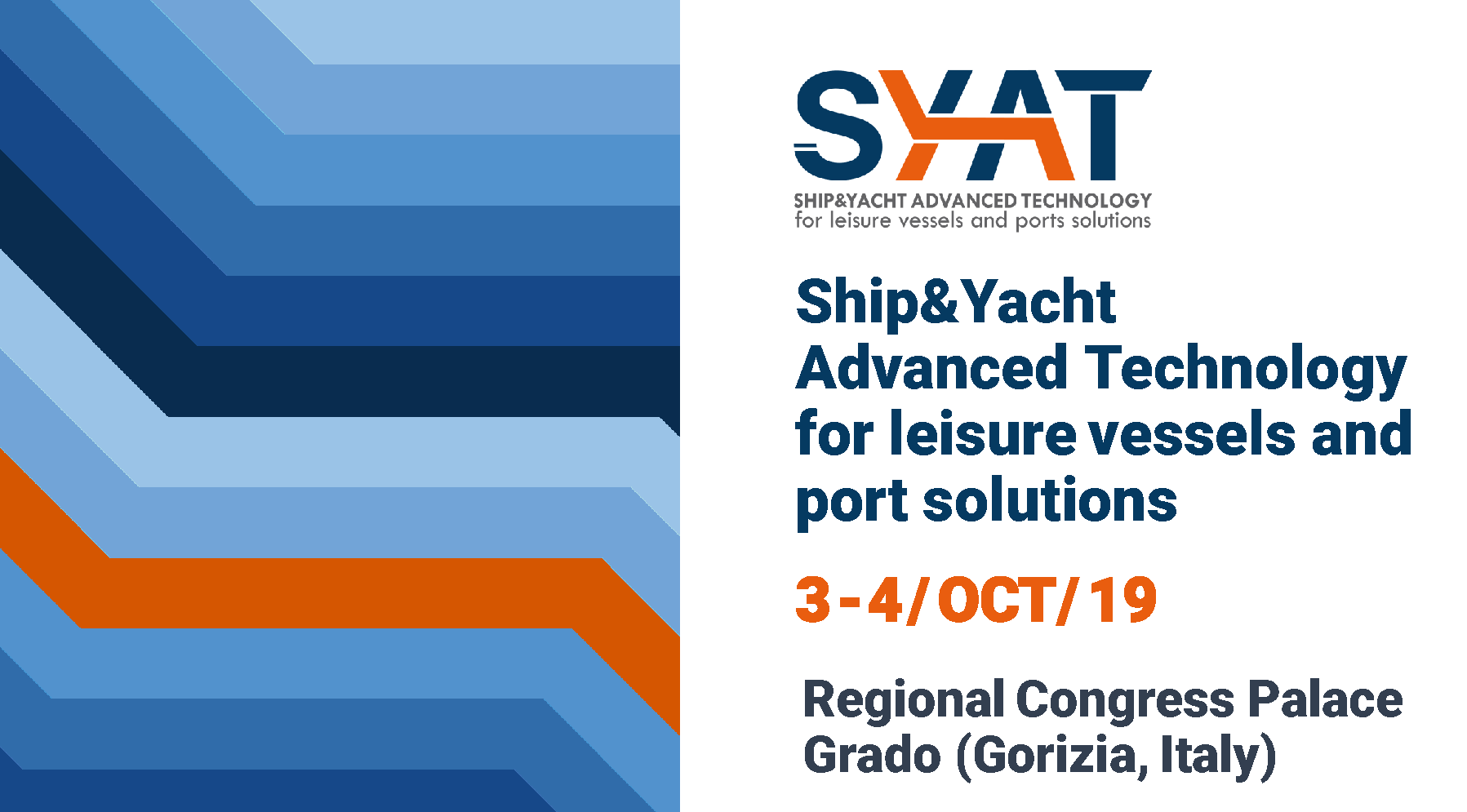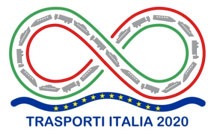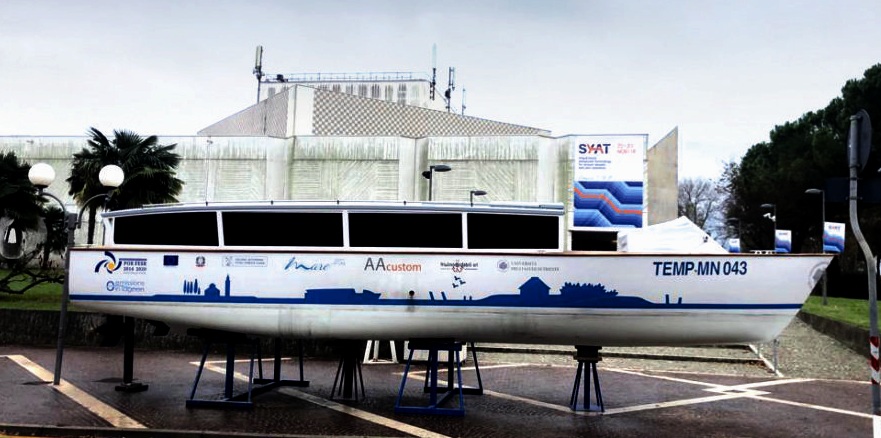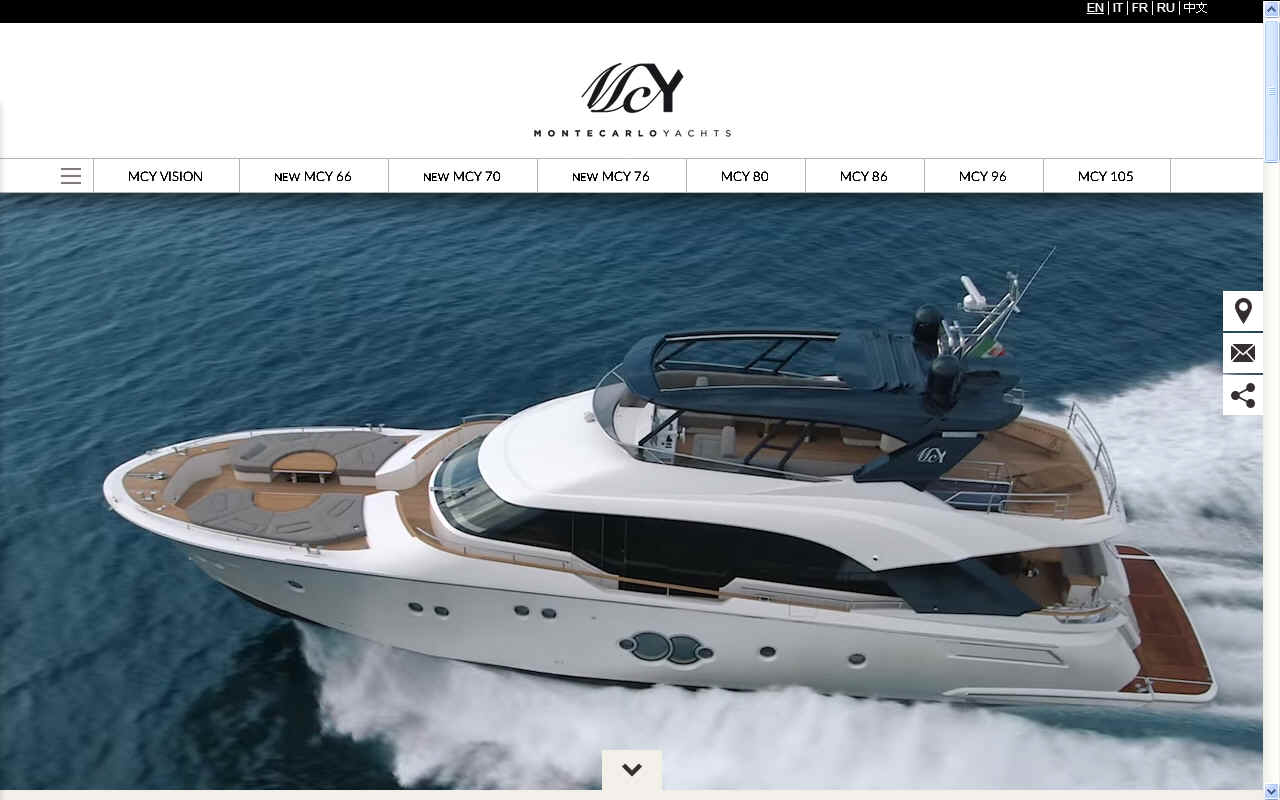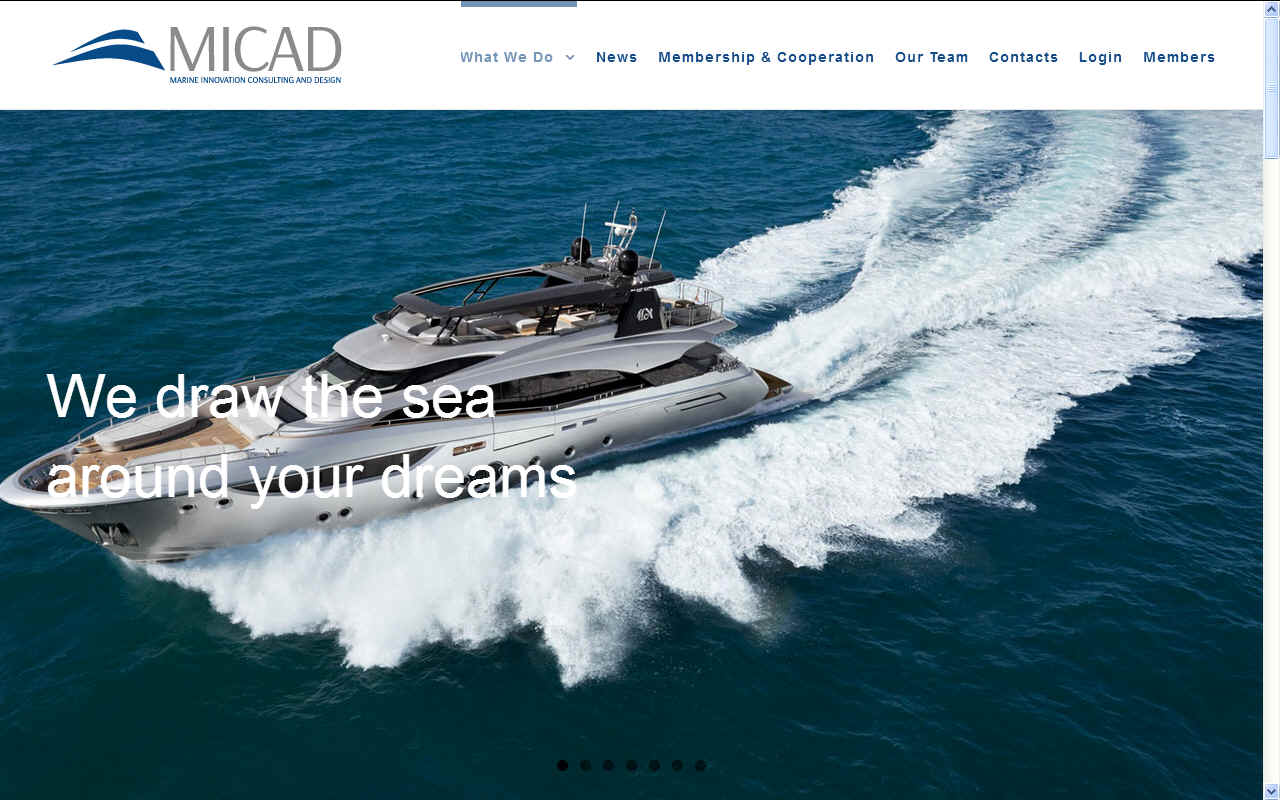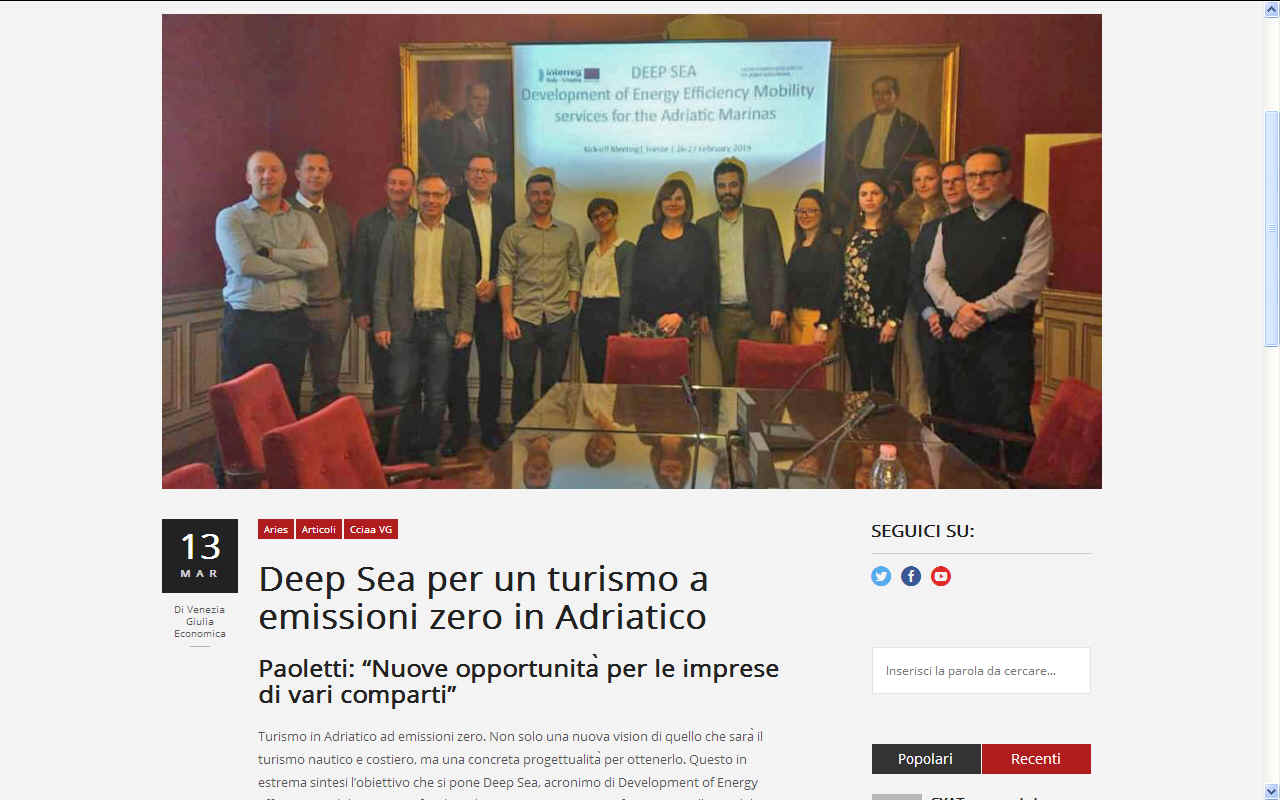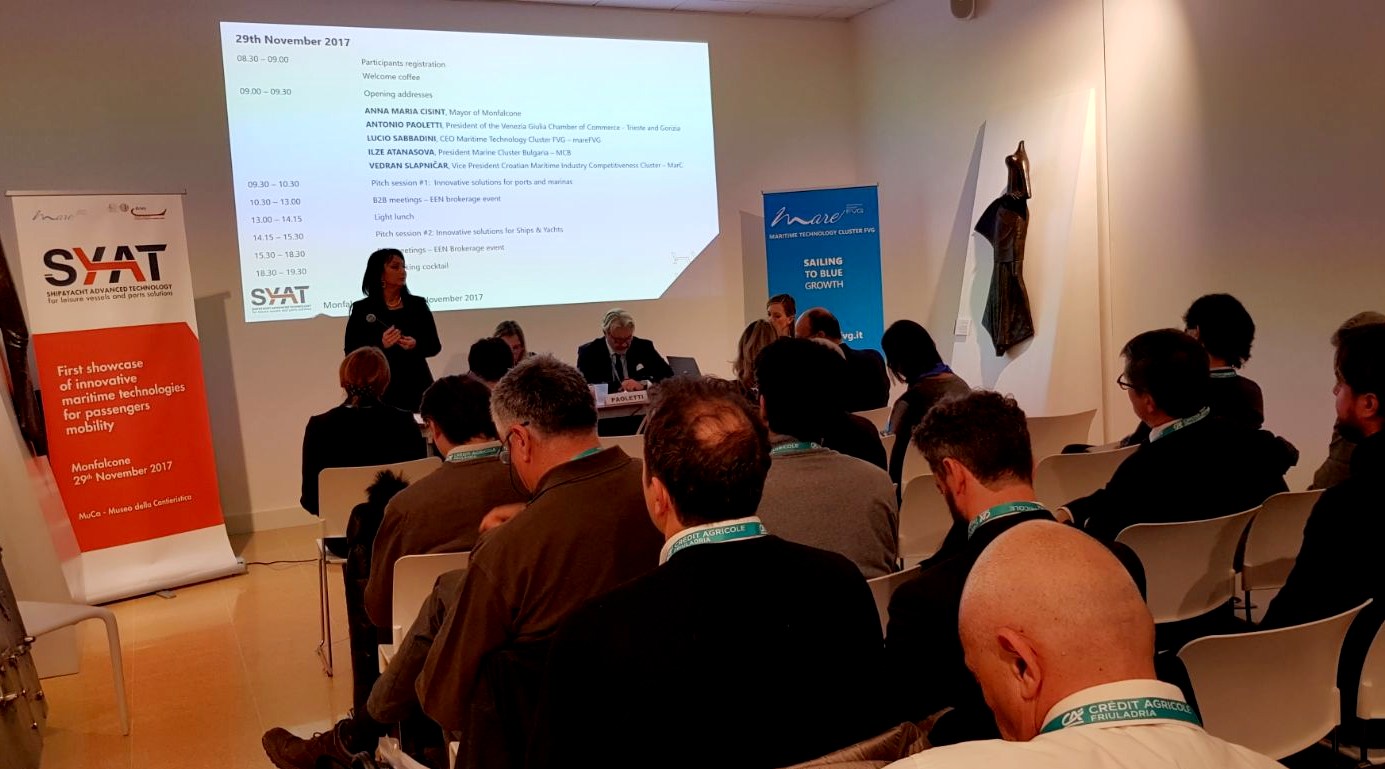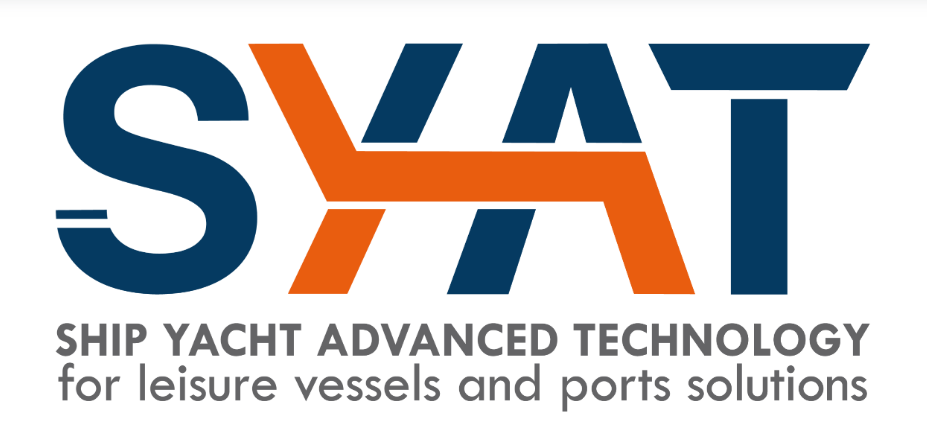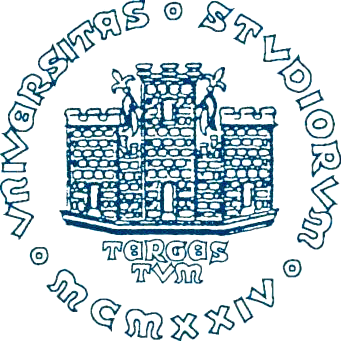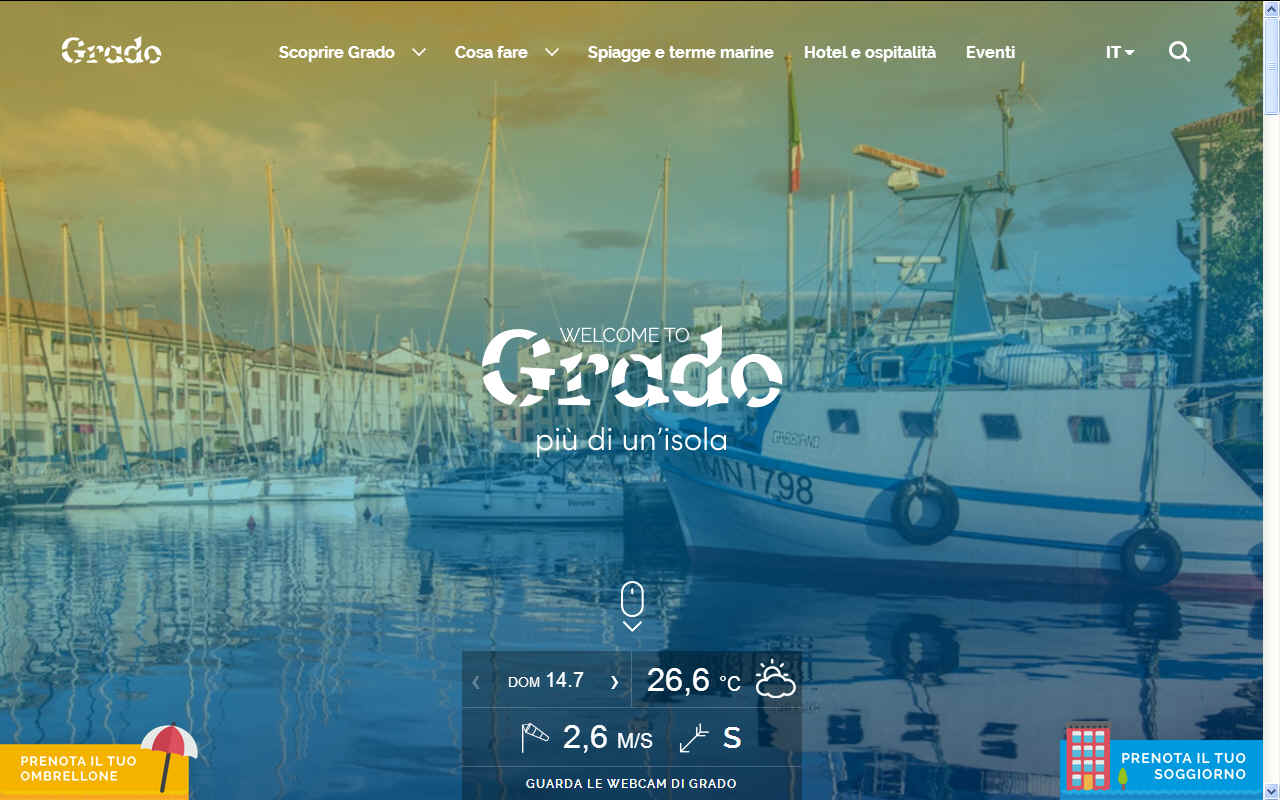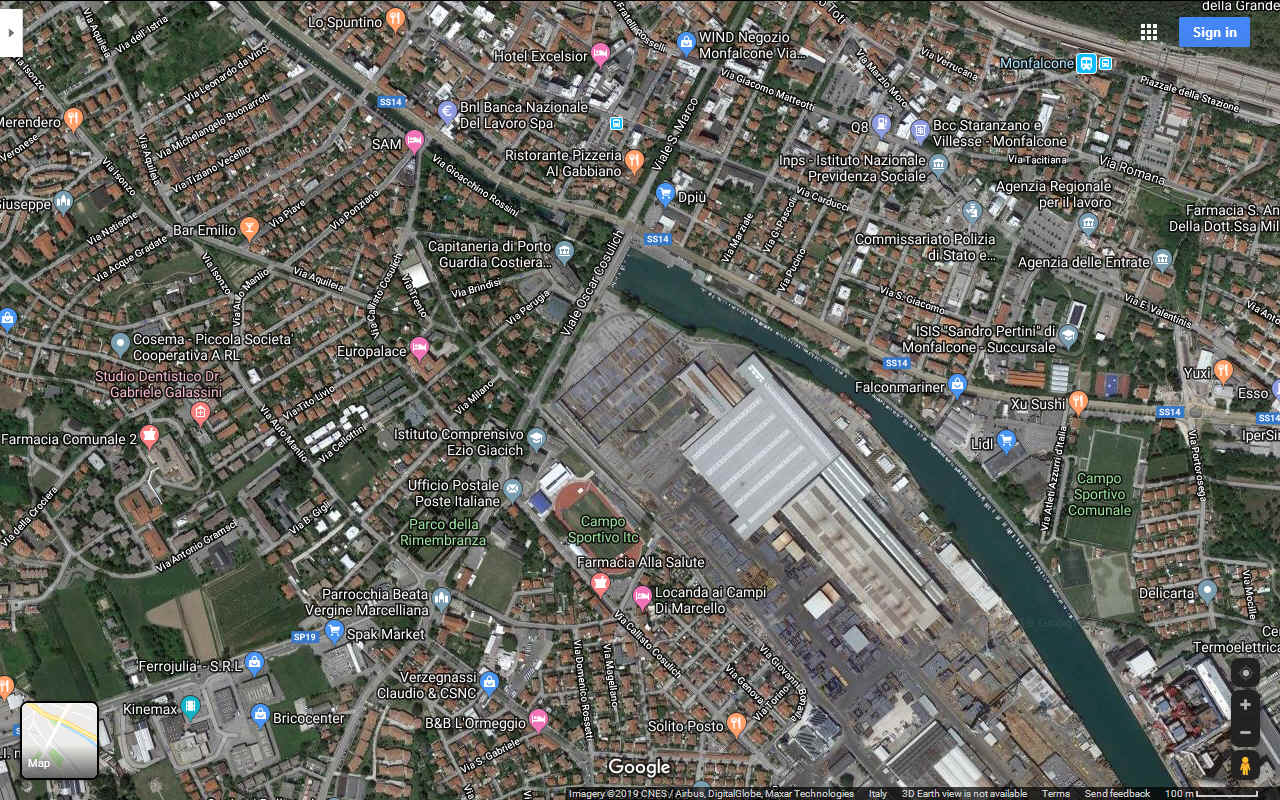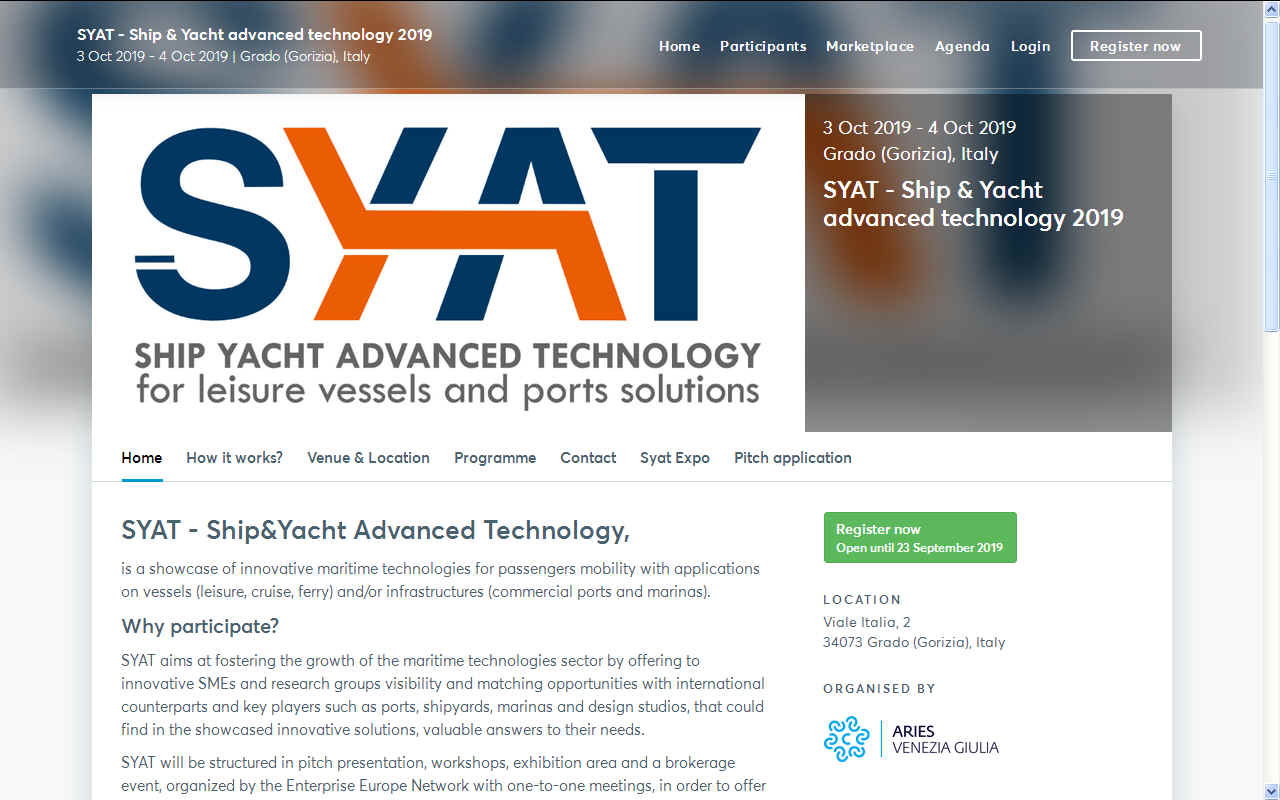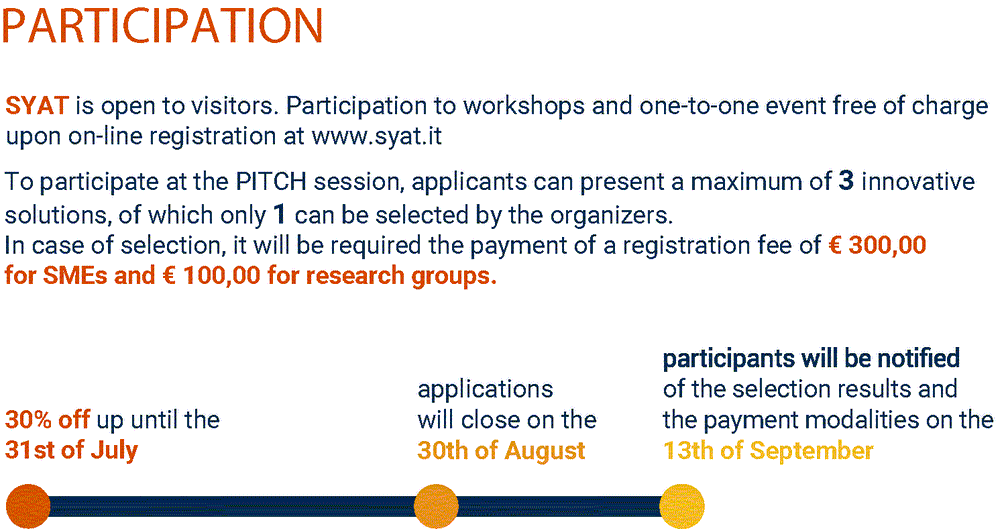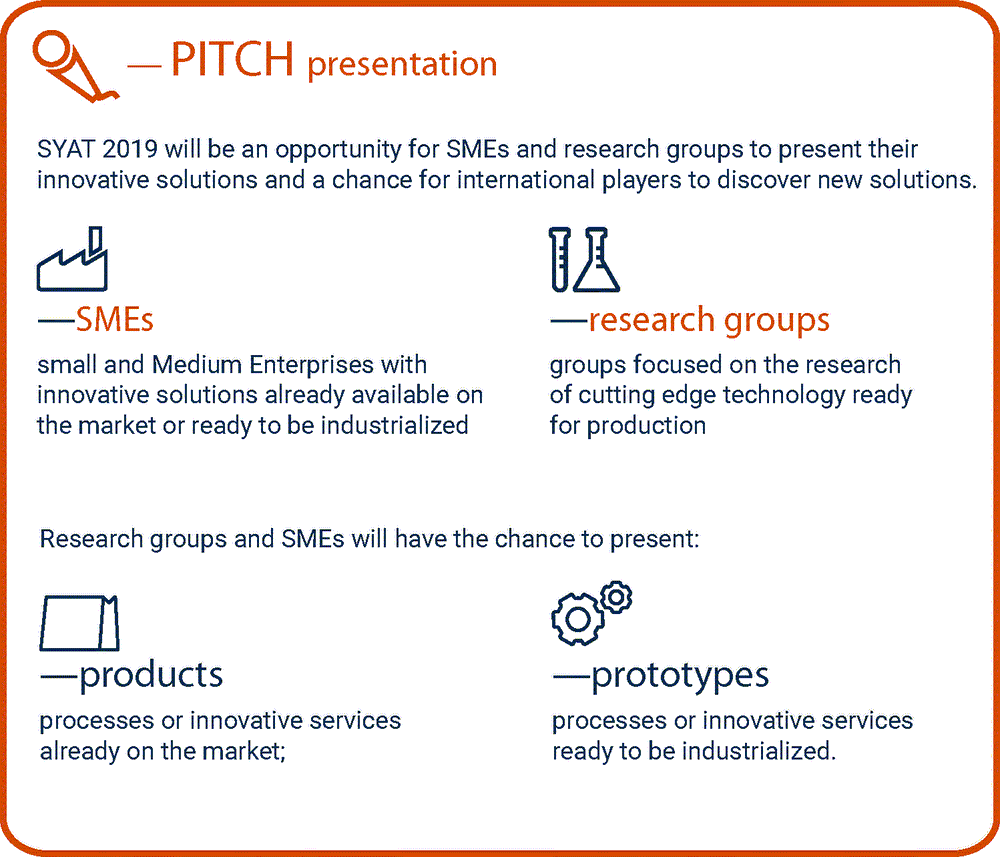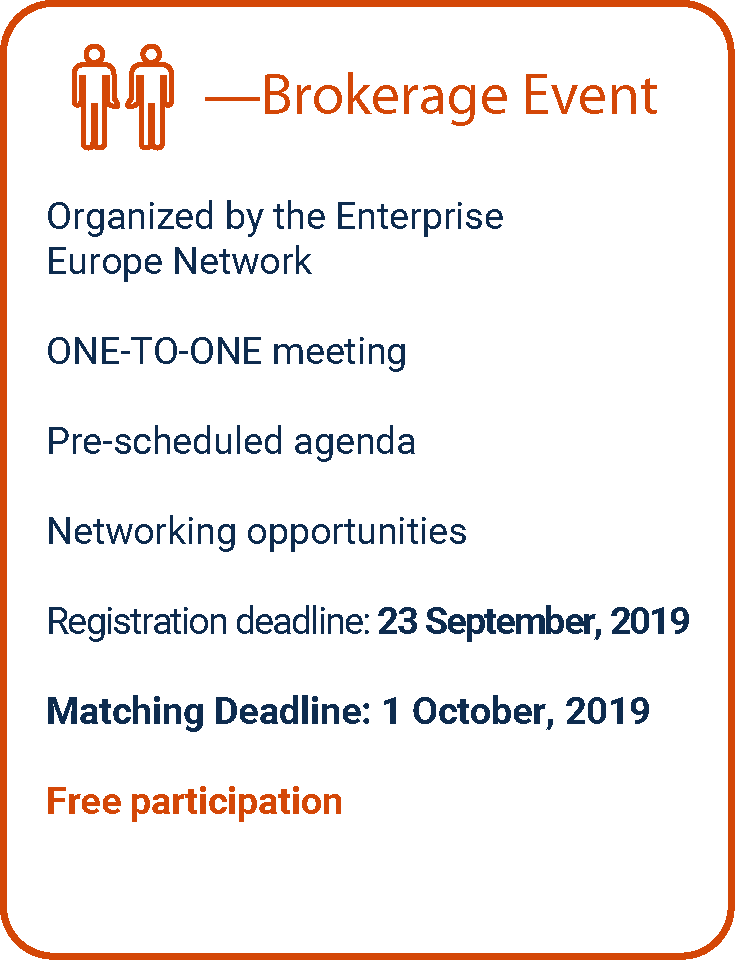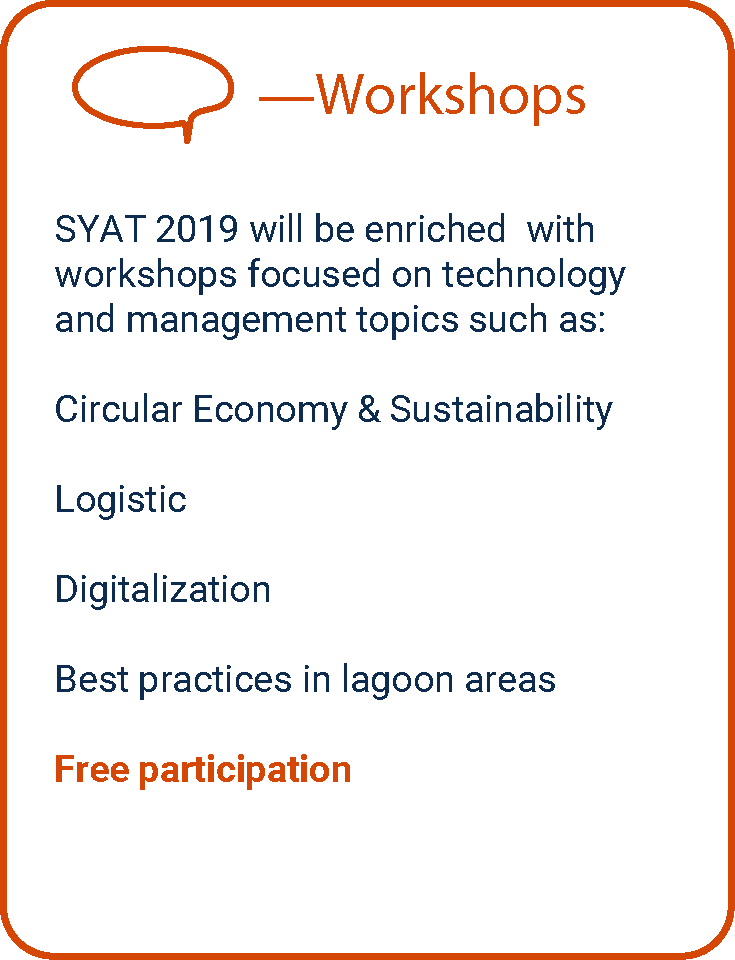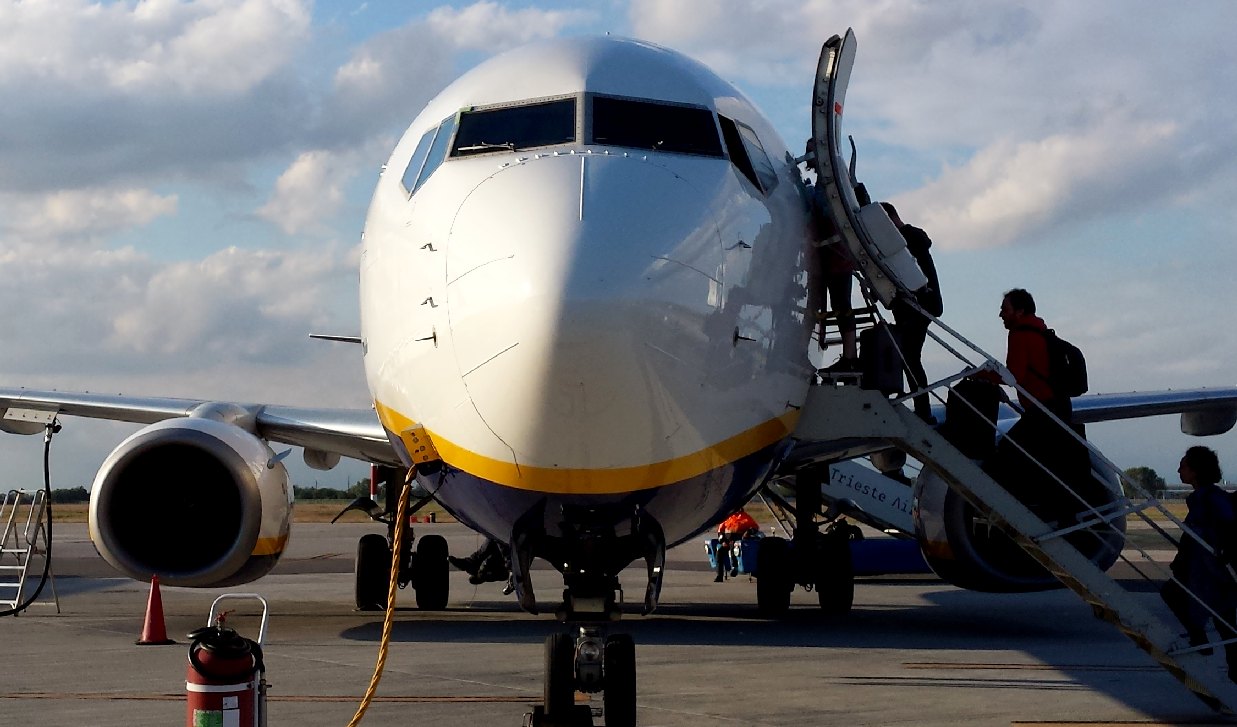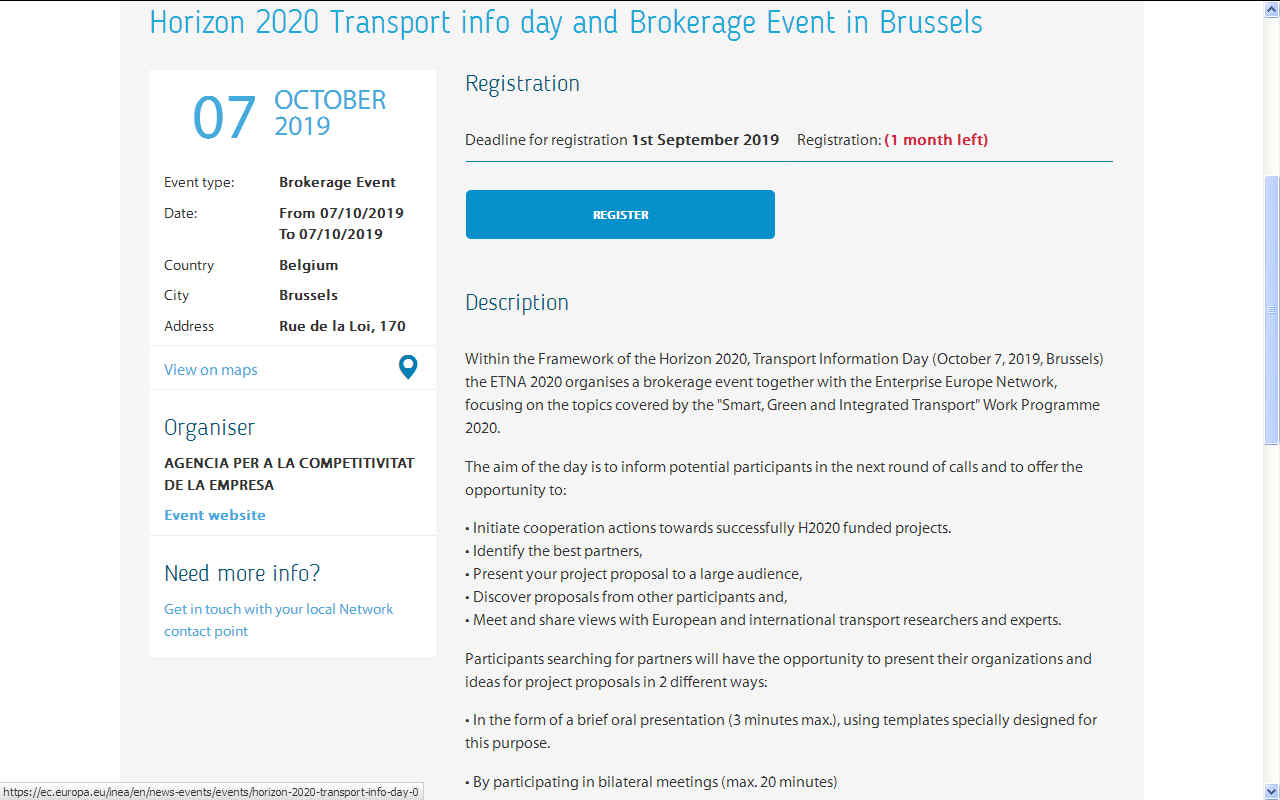|
SYAT - SHIP & YACHT ADVANCED TECHNOLOGY 2019 ABOUT - CLIMATE CHANGE - CONTACTS - CROWDFUNDING - DONATE - FOUNDATION - HOME - OCEAN PLASTIC PLEASE USE OUR A-Z INDEX TO NAVIGATE THIS SITE
SYAT is open to visitors. Participation to workshops and one-to-one events is free of charge upon on-line registration at www.syat.it
SYAT - Ship & Yacht Advanced Technology event is a showcase of innovative maritime technologies for passenger mobility with applications for leisure, cruise, ferry and ports and infrastructure development (commercial ports and marinas). The event was in its third year.
Generally, the regions dependent on mobility along coastlines and between islands are looking for zero carbon solutions to make their enterprises climate friendly in the face of global warming and the present emergency situation.
SYAT
- Il 3 e 4 ottobre 2019 torna a Grado (Gorizia) SYAT, Ship&Yacht Advanced Technology, il salone per le tecnologie marittime innovative per la mobilità dei passeggeri, alla sua terza edizione.
WHY
DID WE PARTICIPATE?
SYAT was structured as a series of pitch presentations, topic discussion workshops, an exhibition area and a brokerage event, organized by Enterprise Europe Network with one-to-one meetings, in order to offer visibility and networking opportunities for innovation-related SMEs, start ups and research groups.
EXPERT PANELS - Several discussions on various related topics wer hosted at this event, with the audience able to participate and pose questions to the panelists. From left to right: Carlo Pestelli, Calogero Burgio, Francesca Filippelli, Tomislav Uroda, Vincenzo Galati and Paola Gualeni. Unfortunately, this workshop was in Italian (of course for Italy) and our representative does not yet speak the language, hence, though a lively debate, most of the discourse passed him by.
SPEAKERS - The event was well represented by port and harbour authorities & sustainability experts. Pictured here is Guido Piccoli (CEO of ALOT Srl - Innovation and Sustainability) Paolo Marchese (ARIES chamber of commerce of Venezia Giulia) and Aleksandra Bozanic. Aleksandra gave a comprehensive presentation in English as to the state of play and improvement to harbours and marinas currently in progress, or planned - by way of expansion. The talk was comprehensive leaving us with a clear impression that a circular economy was the eventual objective. In terms of blue growth and sustainability for coastal tourism, such additional capacity would need to be catered for by near zero carbon boats, if the IMO's targets are to be met. Clearly, this was a consideration in making local harbours more efficient.
E-MOBILITY PITCH - A great idea for small boat water transport in Venice and other cities and towns serviced by motor boats was presented by Valentina Bortuzzo, with Alessandro Pasquin attending as well as two others from the four strong project team. The group recently graduated from the Universita Trieste, Ingegneria Navale. The E-Mobility project proposes replacing petrol and diesel engines in the likes of Riva boats (as one example) with electric motors and battery cartridges, such as the BMW i3 30kW pack shown in the presentation slide above. The range would be reasonable with a fixed pack, but if the battery packs were quickly replaceable, this would enable water taxis to operate more or less continuously, provided that shore based recharging was catered for by way of supporting infrastructure.
This has been suggested for cars as long ago as a patent in 1991, where an EV could load and unload its own cartridge in around 80 seconds, later improved to 30 seconds, the problem being that each motor manufacturer would need to agree a standard, rather than introduce dozens of different battery cartridge formats, where progression of such a system to a service station would demand standardization to provide a workable infrastructure. With boats, this might not be so much of a problem, meaning that this team may be onto a winner. We have our fingers crossed for them.
MARITIME DAY JUNE 2018 - Agnieszka Dabrowska and Clio Kraskovic at the European Maritime Day in Burgas, Bulgaria. Clio was a speaker on that occasion. At SYAT, she gave splendid conference (IT) support to many of the speakers above who used Word and PowerPoint presentations to illustrate their subjects.
TOP 5 OBJECTIVES TO MAKE THE EVENT A SUCCESS:
ADRIATIC - Almost everyone in Grado enjoys some kind of seagoing activity. There are boat mooring posts all around the natural lagoon, with a variety of sporting and more leisurely paced boats.
AGENDA
Thursday 3 Oct 2019 16:00 – 16:45
- Workshop #2
SOLAR & WIND POWER - Green yachting is something to consider for the future of planet earth, as global warming threatens the seas with acid oceans and melting ice caps, you can help lead a change from diesel power or bunker fuels (heavy oil) to clean electric propulsion. Meet Nelson Kay, at this event a volunteer for the Cleaner Ocean Foundation. He will be sharing our information and looking for development partners for the ferries and cruise ships of the future. Below is a design for an advanced trimaran that can cruise continuously at speeds of up to 10 knots with a top speed of up to 20 knots for faster island hopping.
SUSTAINABLE TOURISM - Economies that depend on coastal cruises and ferry operators to transport passengers to exotic locations, may be thinking of their future as zero carbon shipping becomes a requirement as part of a general transition to a circular economy. Our representative was at SYAT looking to build a consortium for collaborative research under one of the H2020 initiatives, aimed at using solar and wind power, to minimize infrastructure disruption during the transitional phases to clean ocean transport.
SUSTAINABLE TOURISM - As MARPOL and IMO targets bite, it will become increasingly difficult for some tourist destinations to maintain visitor numbers where climate warming becomes more of a subject for responsible sightseers worried about their carbon footprints. The problem might be solved and even used as a selling feature, where zero carbon vessels are used to transport passengers and provide coastal cruises at similar speeds to conventional fossil fueled boats - especially where the Italian, French, Croatian, Slovenian and Greek coasts are so attractive to visitors, who typically want to come back again and again.
OUTBOARDS - Most of these pleasure craft carried petrol outboard engines. These could be replaced by batteries and electric engines to clean up the town's act, except that they are privately owned. See the idea presented by Valentina Bortuzzo in a pitch session above.
MARITIME TECHNOLOGY CLUSTER FVG s.c.a.r.l.
The ability to pool expertise and experience from different areas and gain competitive advantage from this is the challenge a territory must know how to seize in order to secure future well-being, prosperity and development. “Networking” – the grouping of institutions, industry, business and science – is thus an essential factor for growth. Dedicated resources, both public and private, able to ensure continuity and sustainability, the basis for its development; a mapping of needs and shared strategies, are the cornerstones of action to be taken.
PARTNERS
- The Members of the Cluster are:
CLUSTER TRANSPORTI ITALIA 2020
Croatian Maritime Industry Competitiveness Cluster -
MarC
CATAS is the Italian institute for certification, research and testing in the field of wooden furniture, excellence pole for the research and the analysis in the agri-food, industrial and environmental sector. The institute was established in 1969 by the Chamber of Commerce of Udine to support local companies to grow on new foreign markets, conform on foreign regulations and permit them to get all the information related to the utilization of new materials.
MARE CONTACTS Claudio Kovatsch – Chairman
Debora Saviana - debora.saviana@marefvg.it
Clio Kraskovic
- clio.kraskovic@marefvg.it
MARITIME TECHNOLOGY CLUSTER FVG s.c.a.r.l.
SYAT 2017
Soluzioni tecnologiche innovative, progetti di ricerca e sviluppo, approfondimenti tecnici e interessanti opportunità commerciali. Il tutto declinato al settore nautico. Sta crescendo, edizione dopo edizione, SYAT – Ship&Yacht Advanced Technology, l’evento organizzato da Aries e mareFVG – Maritime Technology Cluster del Friuli Venezia Giulia, che quest’anno è stato ospitato nel Palazzo regionale dei congressi di Grado. Realizzato con il patrocinio del Comune di Grado, con il sostegno di Azienda speciale Zona Franca Gorizia, Crédit Agricole FriulAdria, Regione Autonoma Friuli Venezia Giulia, Camera di Commercio Venezia Giulia, SYAT ha coinvolto una quarantina di imprese – alcune anche dell’Est Europa – e responsabili di importanti realtà di settore: cantieri navali e nautici, prime contractor, armatori, porti, studi di progettazione, key player di rilievo internazionale.
Molte le proposte fortemente innovative presentate nel corso del salone: un mezzo meccanico anfibio radiocomandato per il trasporto, l’alaggio e il varo di moto d’acqua e natanti da diporto, sistemi per le manovre di attracco e partenza nei porti, un impianto di sollevamento elettrico per chiglie telescopiche di barche a vela, un materiale termoplastico per cover di motori marini e un’imbarcazione equipaggiata con propulsione ibrido-elettrica in grado di abbattere totalmente le emissioni inquinanti e i rumori. Finanziato con fondi europei, quest’ultimo progetto, denominato “Zelag” (Zero emission navigation laguna di Grado), è stato realizzato dalla sezione di Ingegneria Navale dell’Università di Trieste, in collaborazione con il Cantiere Alto Adriatico Custom e la Friulinossidabili.
DEEP
SEA MARCH 2019 - Turismo in Adriatico ad emissioni zero. Non solo una nuova vision di quello che sarà il turismo nautico e costiero, ma una concreta progettualità per ottenerlo. Questo in estrema sintesi l’obiettivo che si pone Deep Sea, acronimo di Development of Energy Efficiency mobility services for the Adriatic marinas, progetto finanziato nell’asse del Trasporto marittimo del Programma Interreg Italia-Croazia e che ha preso avvio questa mattina a Trieste in Camera di Commercio Venezia Giulia con l’incontro operativo dei partner. Complessivamente il valore del progetto è pari a 2,5 milioni di euro (durata gennaio 2019- 30 giugno 2021) e vede come leader partner Aries Scarl-Camera di Commercio Venezia Giulia.
SYAT
2017 - Il 22 e 23 novembre torna “SYAT – Ship & Yacht Advanced Technology for leisure vessels and ports solutions”, la prima vetrina delle tecnologie marittime innovative per la mobilità dei passeggeri con applicazione su navi (tempo libero, traghetto da crociera) e/o infrastrutture (porti commerciali e marina), organizzato da Aries – Camera di Commercio Venezia Giulia, in collaborazione con il cluster tecnologico marittimo regionale MareFVG.
Con la sua formula vincente SYAT sta rafforzando la conoscenza tra le importanti realtà industriali del nostro territorio e la miriade di Pmi in grado di presentare prodotti e servizi sempre più innovativi. Player importanti come Fincantieri, Montecarlo Yachts, Wärtsilä, la rete delle marine FVG, cantieri più piccoli ma specializzati nel “refit” di imbarcazioni in legno e di superyacht si sono confrontati sui processi di innovazione ritenuti oggi imprescindibili. Momenti di incontro tra fabbisogni e soluzioni che vengono costantemente favoriti dal Cluster mareFVG e dalla Camera di Commercio Venezia Giulia.
FRIULI VENEZIA GIULIA - This is an advertising poster at Trieste airport close to the check in counter, one of the best pictures of Grado we've seen.
ABOUT GRADO
The vintage beach resort of Grado, 14km south of Aquileia, spreads along a narrow island backed by lagoons and is linked to the mainland by a causeway. Behind the family-friendly beaches you'll find a mazelike medieval centre, criss-crossed by narrow calli (lanes). Belle époque mansions, beach huts and thermal baths line the cheerful seafront. The greyish local sand is considered curative and is used in treatments. Grado comes alive from May to September, but is also prime passeggiata (evening stroll) territory on any sunny Sunday.
HISTORY - Almost all towns and cities are built on the remains of earlier civilizations. This mosaic is now protected as a feature of Grado. The archive monochrome photograph of one of the most trodden streets, contrasts well with a picture taken in October 2019, to show how relatively unspoiled the city is.
Once mainly a fishing center, today it is a popular tourist destination, known commonly as L'Isola del Sole ("The Sunny Island"), also famous because it is also a spa town; together with Marano Lagunare, it is the center of the Marano-Grado Lagoon, which is famous for its uncontaminated nature. Grado is the birthplace of Biagio Marin, a poet who sang about the island in the local Venetian dialect.
Modern landmarks include the Basilica of Sant'Eufemia (Cathedral), with the octagonal Baptistry (late 5th century). The church was once preceded by a quadri-portico, one of the columns of which is now in the centre of the Patriarch's Square. The current appearance of the church dates from the reconstruction by Fra Elia (579), with a simple hut façade and a bell tower (15th century) on the right side, which is surmounted by a statue portraying St. Michael and known as the Anzolo (1462). The interior has a nave and two aisles. The main point of interest is the mosaic pavement from the 6th century, restored in 1946–48.
EMERGENCY SERVICES - By and large the Polizia and Ambulanza services kept a low profile with just enough assurance for street traders and tourists to feel comfortable. The night life is also peaceful and quiet for those taking in the evening air.
POLLUTION - By and large there was almost no evidence of pollution, but our roving reporter did spot a couple of examples in out of the way places. As he says, this is a very clean and well kept resort bereft of street litter, the likes of which coastal towns in England would do well to take note. Grado officials should be proud of their town. The Isle of Wight on the south coast of England and Devon and Cornish coasts are equally well maintained. Brighton, Eastbourne and Hastings now have beach cleaning groups operated by Surfers Against Sewage, but still has a way to go to compete with this part of Italy and other Mediterranean tourist attractions.
SIGN POSTS - Grado is well signposted for those driving and walking. Tennis anyone?
Today, Grado attracts scores of tourists each year to its hotels and campgrounds. A large water park run by a municipal corporation is the main attraction, complete with indoor and outdoor swimming pools, and a health center offering spa treatments.
AIRPORT - We liked the colour scheme at Trieste airport.
LOW CARBON TRANSPORT - Refreshingly, these cycle lanes are well used, keeping the town a bit cleaner until electric cars take over and there is a better charging infrastructure to support a sustainable future.
The
rivers of the region flow from the North and from Slovenia into the Adriatic. The two main rivers are the Tagliamento, which flows west-east in its upper part in the Carnic Alps and then bends into a north-south flow that separates the Julian Alps from Alpine foothills and the Isonzo (Soča slo.) which flows from Slovenia into Italy. The Timavo is an underground river that flows for 38 km from Slovenia and resurfaces near its mouth north-west of Duino.
LINKS & REFERENCE
http://www.vgeconomica.it/index.php/deep-sea-per-un-turismo-a-emissioni-zero-in-adriatico/ http://www.vgeconomica.it/index.php/syat-porta-a-grado-linnovazione-nella-nautica/ http://www.vgeconomica.it/index.php/ritorna-syat-a-grado-22-e-23-novembre-la-vetrina-delle-tecnologie-marittime-innovative/ http://www.clustertrasporti.it/save-the-date-ottobre-torna-syat-shipyacht-advanced-technology/ https://ec.europa.eu/info/departments/maritime-affairs-and-fisheries_en https://ec.europa.eu/inea/en/connecting-europe-facility http://www.clustertrasporti.it/ https://een.ec.europa.eu/events/horizon-2020-transport-info-day-and-brokerage-event-brussels https://www.booking.com/city/it/grado.en.html https://syat2019.b2match.io/marketplace https://syat2019.b2match.io/participants/1 https://een.ec.europa.eu/ https://grado.it/it/ http://www.montecarloyachts.it/ https://www.micad.it/ https://www.marefvg.it/it/home.htm https://syat2019.b2match.io/
Grado is a tourist town of the North Adriatic Sea, located between Trieste and Venice. It is the favorite destination for many Italian and foreign tourists who are looking for a holiday dedicated to the sun and the sea, family-friendly, faraway from everyday stress.
GRADO - Grado is a town and comune in the north-eastern Italian region of Friuli-Venezia Giulia, located on an island and adjacent peninsula of the Adriatic Sea between Venice and Trieste.
CORIZIA - Gorizia has a humid subtropical climate (Köppen climate classification Cfa). The town is located at the confluence of the Isonzo and Vipava Valleys. It lies on a plain overlooked by the Gorizia Hills. Sheltered from the north and from the east by a mountain ridge, Gorizia is completely protected from the cold bora wind, which affects the rest of the neighboring areas. The town thus enjoys exceptionally a mild Mediterranean climate throughout the year, making it a popular resort.
RYANAIR - Jet aircraft fuelled by kerosene could be a thing of the past as policies change and clean fuels are demanded to combat global warming. Watch out for hidden charges made by some airlines such as Ryanair, where 50 euros might be charged to obtain a boarding pass. Making so-called economy flying quite a bit more expensive and even more morally objectionable for those worried about climate change. Yes, this is true, fifty euros just to get a boarding pass - and only mentioned when you are stranded so at the mercy of the operators. Several passengers on this flight from Trieste to Stansted airport in London got caught out and were forced to pay extra for a piece of paper that is free on other airlines and at other airports when you book in. We wonder if this might be an advertising standards issue or a human rights violation for those without mobile internet equipment while on the move. If you have been forced to pay extra like this please get in touch. It might be worth choosing another destination and a different operator. Maybe travel by an electric boat. We hope zero carbon in the near future.
CLIMATE CHANGER - The above table illustrates one of the most likely ocean awareness expedition routes, known as the 'Sunshine Route,' showing the time elapsed in days for 7 knots average cruising speed, including times for 5 and 6 knot averages - allowing for 10% downtime and 36 days in ports. Hence, although the objective is to reduce the current solar circumnavigation record from 584 days, the event in not an outright non-stop yacht competition in the offshore racing sense. It remains to be seen how accurate such a prediction might be. In this table we only allowed 36 days for provisioning and PR but added a 10% contingency for servicing, that could be used for additional time in ports. As a Climate Changing event, performance is one of the main criteria, especially concerning the possibilities for a transition to low carbon shipping and the contribution this might make in combating global warming.
ACIDIFICATION - AEGEAN - ADRIATIC - ARCTIC - ATLANTIC - BALTIC - BAY BENGAL - BAY BISCAY - BERING - BLACK - CAPE GOOD HOPE CAPE HORN - CARIBBEAN - CORAL - EAST CHINA - ENGLISH CH - GULF GUINEA - GULF MEXICO - GUANABARA BAY - INDIAN IONIAN - IRISH - MEDITERRANEAN - NORTH SEA - PACIFIC - PERSIAN GULF - SEA JAPAN - STH CHINA - SEA LEVEL RISE
This website is provided on a free basis as a public information service. copyright © Cleaner Oceans Foundation Ltd (COFL) (Company No: 4674774) 2019. Solar Studios, BN271RF, United Kingdom. COFL is a charity without share capital. The names AmphiMax™, RiverVax™ and SeaVax™ are trade names used under license by COF in connection with their 'Feed The World' ocean cleaning sustainability campaign.
|
